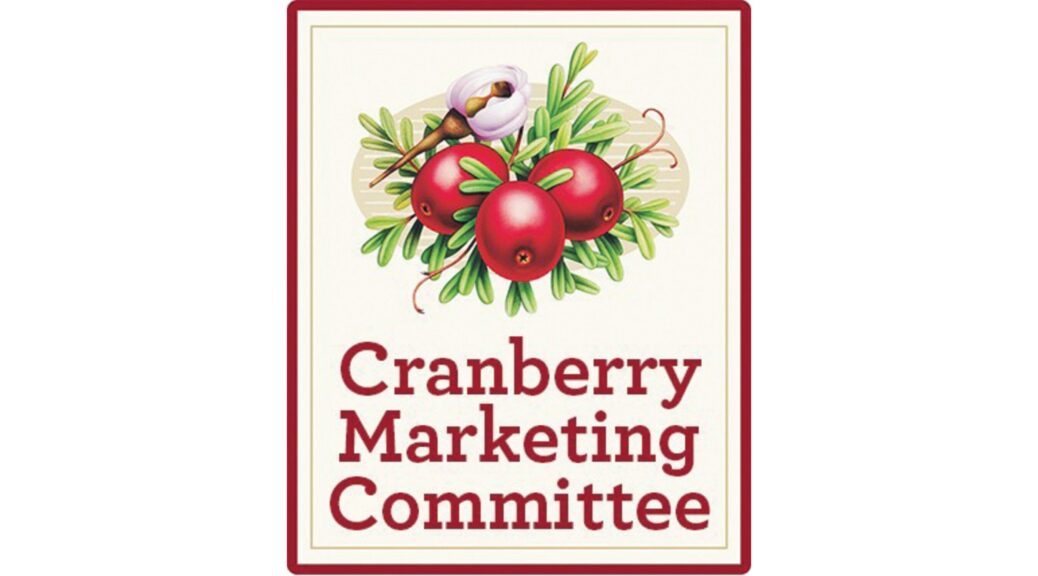The Cranberry Marketing Committee (CMC) completed its biannual exercise of estimating the next U.S. cranberry crop production with the 2023 crop expected to be 8,165,000 100-lb barrel equivalents representing a 3.6 percent increase from 2022.
WAREHAM, Mass., Sept. 11, 2023 /PRNewswire-PRWeb/ — Cranberry Marketing Committee Announces 2023 U.S. Cranberry Crop Estimate Wareham, Mass., September 8, 2023 – At its annual summer meeting August 14, 2023, the Cranberry Marketing Committee (CMC) completed its biannual exercise of estimating the next U.S. cranberry crop production with the 2023 crop expected to be 8,165,000 100-lb barrel equivalents representing a 3.6 percent increase from 2022.
CMC represents more than 1,200 US Cranberry Growers in the growing regions of Wisconsin, Michigan, Minnesota, Massachusetts, Rhode Island, Connecticut, New Jersey, Washington and Oregon. Growers estimated the regional breakdown as follows: Massachusetts – 1,949,000 barrels, New Jersey – 561,000 barrels, Wisconsin – 4,967,000 barrels, Oregon – 520,000 barrels, Washington – 168,000 barrels.
Cranberries have been commercially cultivated in the United States since the early 1800s. US cranberry growers harvest cranberries annually in the fall from more than 40,000 acres of bogs and marshes. Cranberries were used as a staple by Indigenous people as early as 1550, brewing cranberry poultices to draw poison from arrow wounds, and using cranberry in tea to calm nerves, as well as using the juice as a dye for fabrics. American whalers and mariners carried cranberries on board to prevent scurvy. Today, researchers continue to explore cranberry’s potential effects on urinary tract, gut, and oral health, cardiovascular disease, cancer, glycemic response, and infections such as Helicobacter pylori (H. pylori) bacteria, a cause of gastritis and peptic ulcer disease.
In fact, in 2020, a clinical trial among Chinese adults shows that twice daily consumption of cranberry juice containing 44 mg proanthocyanidins (or “PACs”) has the potential to support gut health as a natural, complementary management strategy for adults in this population infected with H. pylori, but more research is needed. 1
Additionally, last year, the FDA announced a qualified health claim about cranberry juice stating: “consuming one serving (8 oz) each day of a cranberry juice beverage containing 27% cranberry juice may help reduce the risk of recurrent urinary tract infection (UTI) in healthy women. FDA has concluded that the scientific evidence supporting this claim is limited and inconsistent.”2
About the Cranberry Marketing Committee (CMC)
The CMC was established as a Federal Marketing Order in 1962 to ensure a stable, orderly supply of good quality product. Authority for its actions are provided under Chapter IX, Title 7, Code of Federal Regulations, referred to as the Federal Cranberry Marketing Order, which is part of the Agricultural Marketing Agreement Act of 1937, as amended. This Act specifies cranberries as a commodity that may be covered, regulations that may be issued, guidelines for administering the programs, and privileges and limitations granted by Congress. For more information about the CMC, visit http://www.uscranberries.com or follow @uscranberries on Facebook, Twitter, Instagram and Pinterest.
- Zhe-Xuan L, Jun-Ling M, Yang G, Wei-Dong L, Ming L, et al. Suppression of Helicobacter pylori infection by daily cranberry intake: A double-blind, randomized, placebo-controlled trial. J. Gastroenterol Hepatol. 2020 Aug; doi: 10.1111/jgh.15212.
- U.S. Food & Drug Administration. https://www.fda.gov/food/cfsan-constituent-updates/fda-announces-qualified-health-claim-certain-cranberry-products-and-urinary-tract-infections
Media Contact
Karen Cahill, Cranberry Marketing Committee, 5082911510, [email protected], www.uscranberries.com
SOURCE Cranberry Marketing Committee


